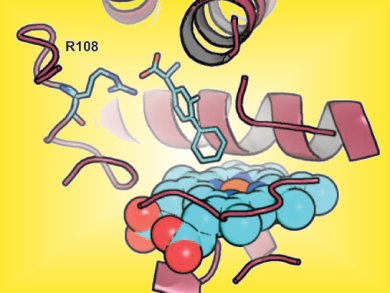As drugs break down in the body, their metabolites can have their own pharmacological, toxicological, and physiological effects. This has lead to complications that have resulted in the withdrawal of several drugs from the market in recent years. Drug metabolism in vivo often involves transformations which currently lack a general counterpart in synthetic organic chemistry. Therefore, drug metabolites cannot be synthesized directly from the drug itself and a different strategy is required.
Frances H. Arnold and colleagues, California Institute of Technology, USA, have engineered two enzyme mimics based on the hepatic P450 oxidases. Many drugs are substrates for these enzymes. The common anti-inflammatory drugs, naproxen and ibuprofen, were converted into their metabolites by the enzyme mimics, generating 1000 and 600 mol of product per mol of enzyme catalyst, respectively.
These enzyme mimics could be used to produce known as well as novel drug metabolites on a preparative scale for their characterization and toxicity testing.
Image: (c) Wiley-VCH
- Engineered Bacterial Mimics of Human Drug Metabolizing Enzyme CYP2C9
A. Rentmeister, T. R. Brown, C. D. Snow, M. N. Carbone, F. H. Arnold,
ChemCatChem 2011.
DOI: 10.1002/cctc.201000452




